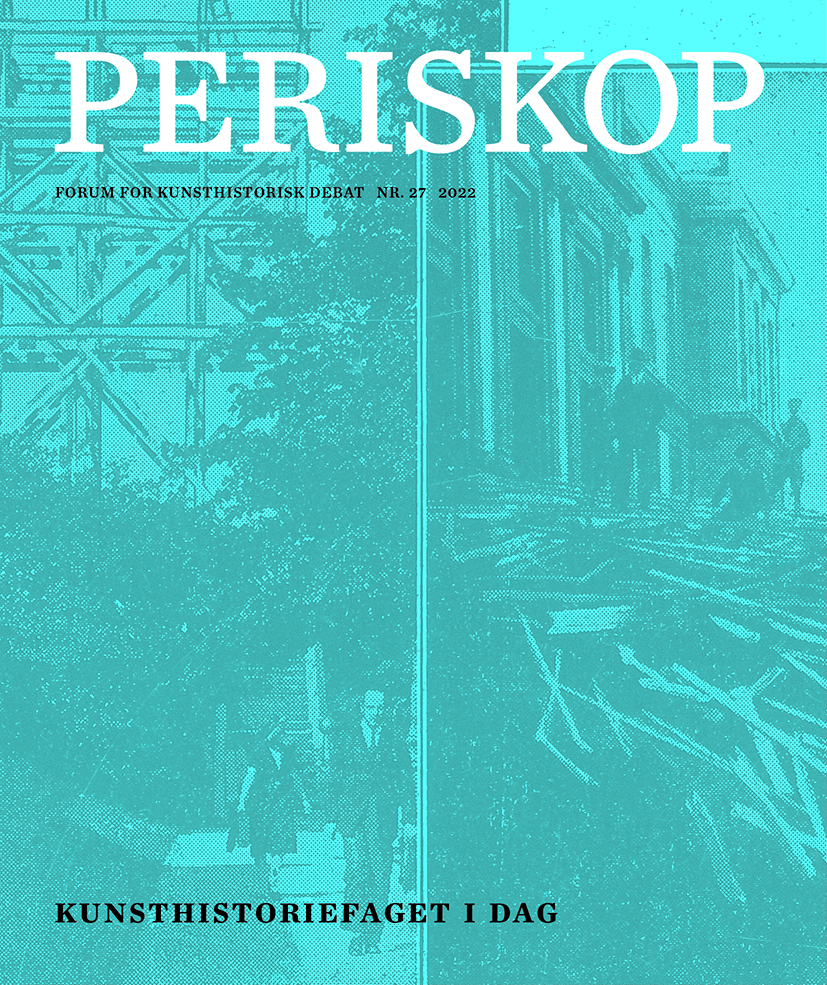I kontaktzonen mellem kunsthistorie og kolonihistorie
I kontaktzonen mellem kunsthistorie og kolonihistorie
DOI:
https://doi.org/10.7146/periskop.v2022i27.133728Abstract
ABSTRACT
In a recent issue of Art History, editors Cathrine Grant and Dorothy Price ask what it would mean to think about art history and colonial history (and in particular decolonization) together. In this article, we continue this conversation in a Danish context, asking: What emerges if we approach Danish art history in light of colonial history and its material and conceptual logics? Our aim is to contribute to critical discussions of art history as discipline by attending to the “contact zones” (Pratt 1992) between art history and colonial history in a Danish and Nordic perspective. With a starting point in an analysis of “colonial ignorance” and methodological nationalism in Danish art history – and in the art museum in particular – the article analyzes two artworks in order to suggest how decolonial perspectives invite a renegotiation of what objects and questions are of relevance and value to art history today.
Downloads
Published
How to Cite
Issue
Section
License
Copyright (c) 2022 Forfatteren og Periskop

This work is licensed under a Creative Commons Attribution 4.0 International License.
Forfattere, der publicerer deres værker via dette tidsskrift, accepterer følgende vilkår:
- Forfattere bevarer deres ophavsret og giver tidsskriftet ret til første publicering, samtidigt med at værket 12 måneder efter publiceringen er omfattet af en Creative Commons Attribution-licens, der giver andre ret til at dele værket med en anerkendelse af værkets forfatter og første publicering i nærværende tidsskrift.
- Forfattere kan indgå flere separate kontraktlige aftaler om ikke-eksklusiv distribution af tidsskriftets publicerede version af værket (f.eks. sende det til et institutionslager eller udgive det i en bog), med en anerkendelse af værkets første publicering i nærværende tidsskrift.
- Forfattere har ret til og opfordres til at publicere deres værker online (f.eks. i institutionslagre eller på deres websted) forud for og under manuskriptprocessen, da dette kan føre til produktive udvekslinger, samt tidligere og større citater fra publicerede værker (se The Effect of Open Access).


